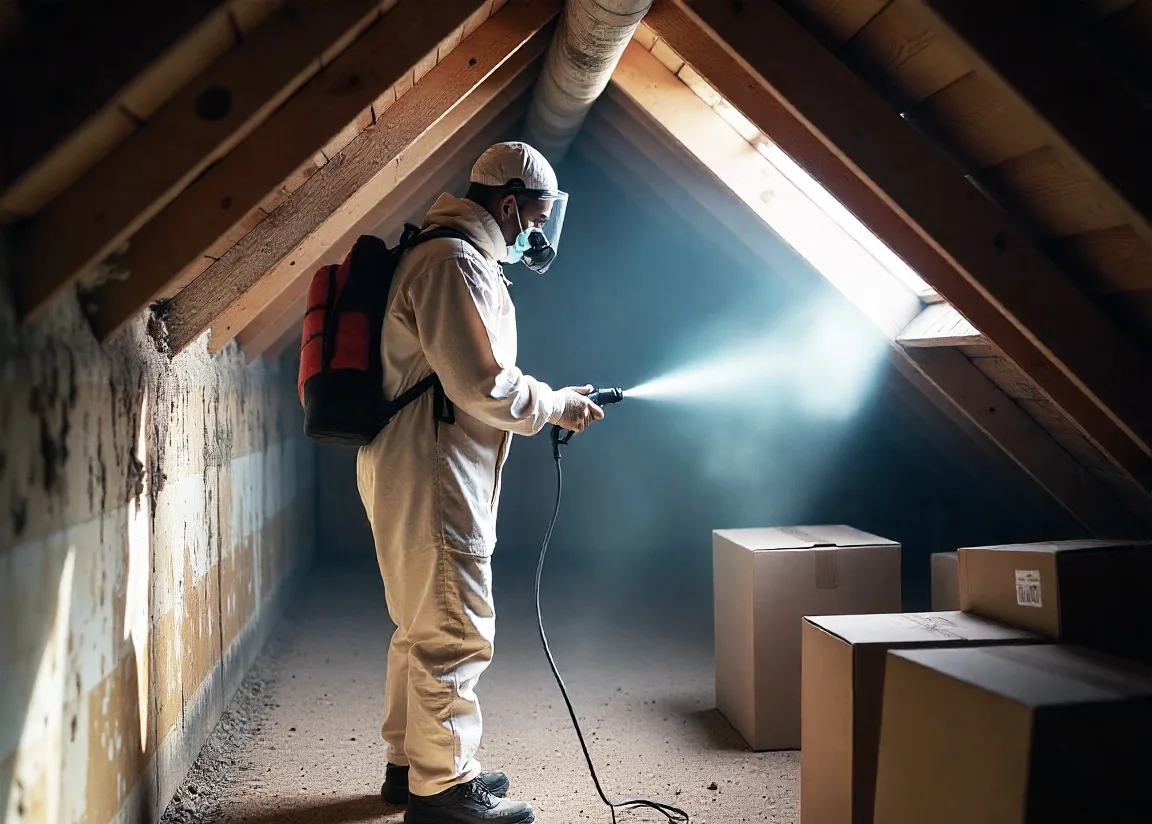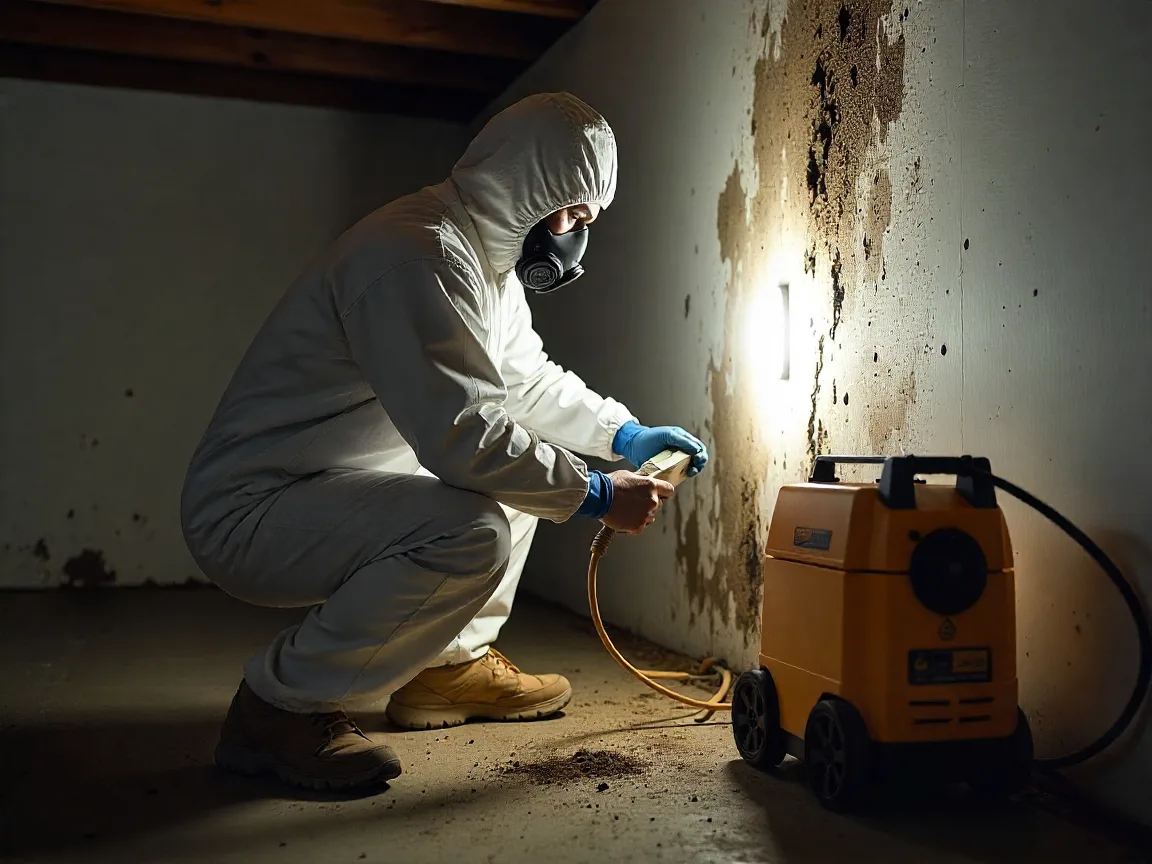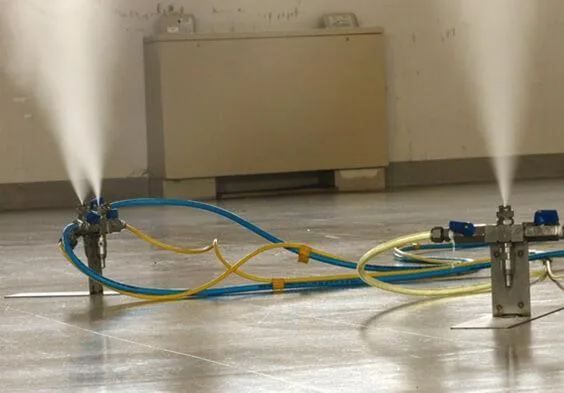If you’re in a rush, here’s the quick answer:
A typical single‑family home can be fully remediated in one working day when technicians deploy sealed containment, negative‑air machines, dry‑fog treatment, and HEPA detailing. Larger or heavily contaminated buildings may extend to 2-3 days, but modern methods rarely require more than one continuous workweek.
To learn more about the process, we dive deeper in the rest of this article.
Mold continues to grow and spread, and the longer it goes unchecked, the deeper its roots crawl into drywall, framing, and even your HVAC system. If you’re researching remediation, the question that shows up in every search bar is the same:
“Exactly how long will mold remediation keep my home or business out of commission?”
The answer matters. Busy families don’t want to live in a construction zone. Companies can’t afford prolonged downtime. In this comprehensive guide, we’ll break down:
- Why speed is more than a convenience
- The step‑by‑step timeline of modern remediation
- Factors that speed up or slow down a project
- Post‑remediation strategies to ensure mold doesn’t return
By the end, you’ll know what a realistic schedule looks like, how dry‑fog technology shaves days off the calendar, and which variables could stretch the job.
Why rapid remediation protects both health and structure
Mold reproduces by releasing microscopic spores that ride air currents. Each spore can germinate in as little as 24 hours on a damp surface. The quicker a professional crew can arrive, isolate the zone, and treat the source, the less chance spores have to migrate. Here’s why time is critical:
Health safeguards
Prolonged exposure raises risks of respiratory irritation, sinus congestion, and asthma flare‑ups. Sensitive groups feel symptoms first. Every extra day of unchecked mold adds to that burden.
Structural preservation
Mold feeds on cellulose found in drywall paper, wood studs, and subflooring. While early colonies only discolor surfaces, advanced infestations can weaken framing, warp flooring, and require costly reconstruction.
Financial efficiency
Containment and treatment cost less than demolition and rebuild. A fast response limits how many building components reach the “tear‑out” threshold.
Speed, then, is not a luxury. It’s a triage measure that protects occupants and pocketbooks.
The full timeline
Let’s trace a remediation project to illustrate where each hour goes.
Same‑day estimate (1–2 hours)
Reputable contractors offer no‑obligation site visits within 24 hours. During this walkthrough, a project manager:
- Identifies visible mold and moisture sources
- Uses moisture meters or infrared cameras to map hidden dampness
- Explains containment zones and rough duration
- Provides a written scope of work and price range
Because estimate appointments are short, you’re not losing valuable treatment time. Planning and remediation often happen the next morning.
Dry‑fog application (15–45 minutes)
Technicians deploy dry‑fog generators. A cool, almost invisible mist fills the containment zone. Unlike thermal foggers or ULV sprayers, dry‑fog droplets are sub‑ten‑micron and small enough to behave like a vapor. They migrate behind crown molding, into light switch cavities, and through carpet backing without wetting surfaces.
The volume of the room and severity of contamination dictate whether one or two cycles are needed.
Dwell period (30–60 minutes)
The fog must sit un‑disturbed so chemistry can complete its cell‑wall disruption. During this time, technicians verify pressure readings and prep equipment for the post‑clean.
Post‑fog ventilation (20–40 minutes)
Negative‑air fans and HVAC blowers (set to continuous) exchange indoor air until a particle meter shows levels returning to baseline. Because dry‑fog droplets evaporate quickly, this airing‑out window is short.
Humidity, outdoor weather, and the home’s air‑change rate can speed or delay venting.
HEPA detail cleaning (40–120 minutes)
Crews vacuum carpeting, hard floors, vents, and trim with HEPA units, then wipe horizontal surfaces with microfiber cloths. This step removes dead spores, chemical residue, and general dust. It also acts as a final quality check: technicians visually confirm every corner is free of spotting.
Post‑remediation evaluation (20–30 minutes)
The lead tech walks you through:
- Before/after moisture readings
- Photos of cleaned areas
- Recommendations for dehumidifiers, gutter repairs, or ventilation upgrades
- Warranty information and optional clearance sampling details
How property type affects total project time
The size of your property makes a difference. Here’s why:
Compact apartments
Fewer walls and smaller footprint mean containment goes up fast. Many jobs finish in three hours or less.
Mid‑size homes (1,500–2,500 sq ft)
Expect four to six hours total.
Large homes (3,000 sq ft and up)
Separate HVAC zones, walk‑in attics, or finished basements and sealing new zones and moving equipment take extra time, not the fogging itself.
Commercial spaces
Open‑office layouts remediate quickly because of fewer interior walls. Office suites with multiple rooms, drop ceilings, and data‑center equipment take longer.
Common scenarios that stretch timelines
These factors can lengthen the process:
Ongoing water intrusion
If a pipe is still leaking, remediation pauses until plumbing is repaired. Professional crews often coordinate same‑day plumbers to minimize delay.
Heavy structural damage
If drywall crumbles at a light touch, sections must be removed, adding demo and debris time. However, dry‑fog can still treat adjacent framing, saving labor on bigger tear‑outs.
Massive clutter
Storage rooms packed wall‑to‑wall slow containment and cleaning. Technicians may ask owners to pre‑clear items or provide additional crew members for fast staging.
Multiple HVAC systems
Each air‑handler closet becomes its own containment zone. More zones equal more containment build‑outs and fog cycles.
A myth that inflates perceived duration
“Dry‑fog leaves everything dripping wet—then you have to dry it.”
Because droplets are ultra‑light, they evaporate on contact. Surface moisture remains well below levels that feed mold.
Keeping your project on the short track
Take these steps to help speed up the process:
- Book a same‑day estimate. Faster assessment means earlier treatment.
- Declutter the work area. Clear floor space speeds containment and cleaning.
- Follow post‑remediation care steps. Controlling humidity and ventilation prevents re‑growth, so you won’t face another remediation session.
 How dry‑fog slashes downtime for businesses
How dry‑fog slashes downtime for businesses
Retail stores, restaurants, and offices can’t afford long closures. Dry‑fog technology shines here, offering:
- After‑hours service – Crews fog overnight so staff return to a clean space by morning.
- Minimal teardown – No construction noise or dust that bothers customers or employees.
- Whole‑building coverage – Fog reaches ductwork and shared plenum spaces, essential for open ceilings common in commercial design.
The cost connection
Extended projects pile on costs, including the following:
- Additional labor hours
- Extra dumpster hauls
- Hotel stays for residents
- Lost revenue for businesses
Rapid dry‑fog remediation minimizes each of these expenses by compressing the schedule while maintaining thoroughness.
FAQs
Can I speed things up by doing my own containment?
DIY plastic rarely achieves a reliable seal. Gaps let spores escape, undermining the project. Let pros handle it because they’ll finish faster and safer.
Will one treatment guarantee mold never returns?
Remediation removes existing colonies. Future moisture intrusions can restart growth. That’s why the post‑remediation plan focuses on prevention, including fixing leaks, managing humidity, and improving airflow.
What if odors linger after fogging?
A faint “clean” scent is normal for a day or two. Persistent mustiness may signal hidden moisture; call the contractor for a follow‑up check.
Ready to reclaim clean air without a week‑long construction marathon? Reach out to MoldGone for a same‑day estimate and see just how fast expert mold remediation can be. Contact us today.





 How dry‑fog slashes downtime for businesses
How dry‑fog slashes downtime for businesses